Sainsbury’s has lifted the lid on the details of its proposed merger with Walmart-owned Asda – a landmark deal that will create a supermarket powerhouse with more than 2,800 stores.
Sainsbury’s and Walmart have agreed terms upon which they hope to create a new combined and enlarged business that will be a “dynamic new player in UK retail with an outstanding breadth of products, delivered through multiple channels”.
Both the Asda and Sainsbury’s brands are to be retained should the grocery giants’ proposed merger be approved, it said, and Walmart will hold a big stake in the business.
The merger is designed to give the retailer “enhanced scale and a strengthened balance sheet”, to make it more “competitive and resilient” in a fast-changing retail landscape.
Sainsbury’s insisted the deal will also deliver a “great deal for customers, colleagues, suppliers and shareholders of both businesses”, because it allows it to better invest in price, quality, range and technology.
The combined business
The merger will create a network of more than 2,800 Sainsbury’s, Asda and Argos stores, as well as several websites, with combined sales of around £51bn in 2017 and 47 million customer transactions per week.
Sainsbury’s said that both the brands will be kept, with the deal enabling the businesses to “sharpen their distinctive customer propositions and attract new customers”.
It expects prices to drop by around 10% on many regularly bought items and said there are no planned Sainsbury’s or Asda store closures as a result of the deal.
Despite speculation about job losses, Sainsbury’s said there would be opportunities for its more than 330,000 colleagues at all levels within the enlarged group.
Sainsbury’s also expects to benefit from Adsa’s high freehold property ownership and pension-free balance sheet, “protecting the interests of hundreds of thousands of Sainsbury’s and Asda pension-holders”.
Who’s in charge?
The combined business will be led by Sainsbury’s chief executive Mike Coupe.
It will be chaired by the Sainsbury’s chairman, but the supermarket confirmed today that current chair David Tyler is to step down after eight years in the role. A search for his successor is under way.
Asda will continue to be run from Leeds by chief executive Roger Burnley, who will also join the operating board of the combined business.
Upon completion of the deal, two Walmart representatives will also join the board of the merged business as non-executive directors.
Coupe dubbed the deal a “transformational opportunity to create a new force in UK retail, which will be more competitive and give customers more of what they want now and in the future”.
He also referenced his prior experience at Asda and said that, because he understands its culture well, he believes the businesses will make for “the best possible fit”.
Burnley offered further reassurance for Asda customers: “The combination of Asda and Sainsbury’s into a single retailing group will be great news for Asda customers, allowing us to deliver even lower prices in-store and even greater choice.
“Asda will continue to be Asda, but by coming together with Sainsbury’s, supported by Walmart, we can further accelerate our existing strategy and make our offer even more compelling and competitive.”
He too pointed to the fact that he previously spent 10 years working at Sainsbury’s.
Walmart will hold 42% of the issued share capital of the combined business and receive £2.975bn in cash, valuing Asda at around £7.3bn.
Upon completion, Walmart will not hold more than 29.9% of the total voting rights in the newly created company.
Sainsbury’s said the close relationship with Walmart, both as a strategic partner and long-term shareholder, will allow it to share knowledge and technology expertise.
Trading updates
Sainsbury’s brought forward its planned full-year results.
The UK’s second-largest grocer said annual underlying pre-tax profits rose 1.4% to £589m, while sales rose 9% to £31.74bn.
Coupe said the increased profitability was “driven by delivery of Argos synergies, efficiency savings across the group and improving food margin trends”.
Asda returned to profit growth in its first quarter.
In the year to December 31, 2017, Asda’s sales rose 2.6% to £22.2bn.
Operating profit fell to £720m from £845m as Asda invested in price and customer proposition.






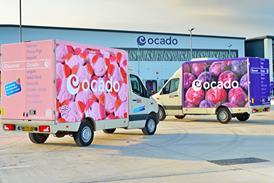



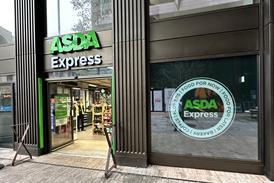


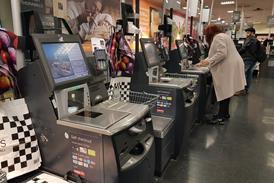








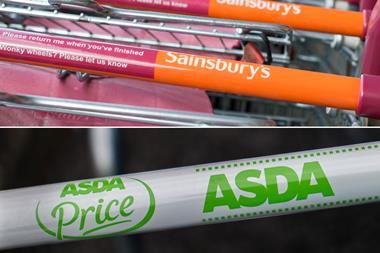

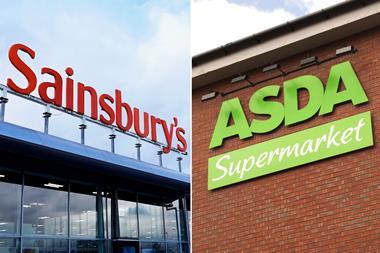
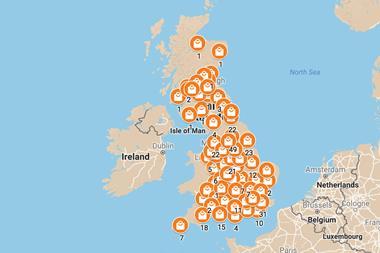

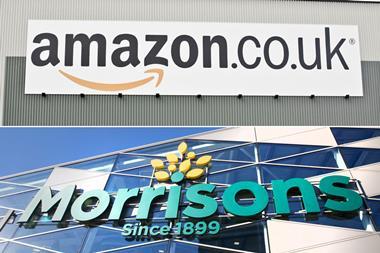
No comments yet